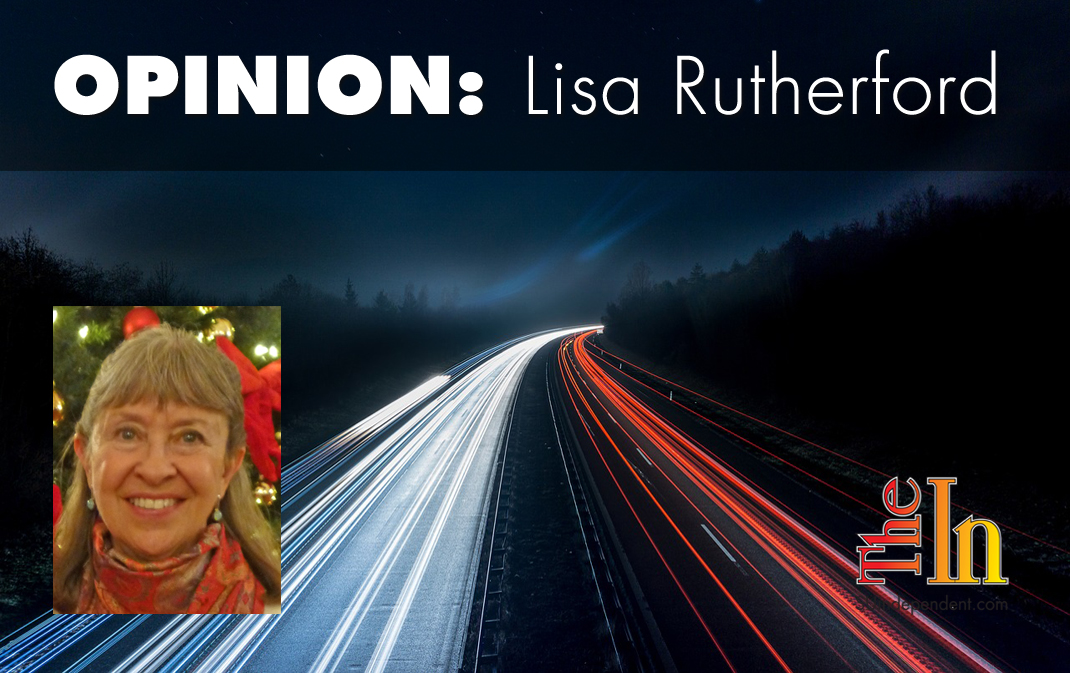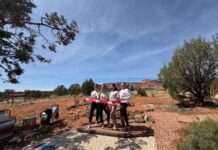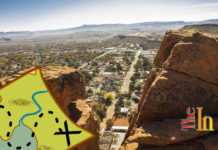
Good planning, not more money, needed for transportation
Traffic planning is complex. I get that, and I don’t declare myself to be a transportation planner. I am, however, a citizen who is concerned about transportation needs and their costs. Just throwing money at the problem when talk of taxes going up seems to abound is not the answer.
Every four years, our Dixie Metropolitan Planning Organization updates the Regional Transportation Plan. The 2019–2050 Regional Transportation Plan is open for public comments now until Aug 3. So, I offer my thoughts on the plan for others to consider and encourage others to submit comments.
DixieMPO has a lot on their plate, and I commend them for their effort to inform the public via the RTP, but many details about the projects are lacking making it difficult for citizens to get the full picture. The “No-Build” scenario used by DMPO to project travel delays and travel time in the county assumes that none of the projects will be built — basically lumping all road effects together rather than singling out specific projects to show their effectiveness or lack thereof.
The fact that the proposed and contentious Northern Corridor is still on the project phase lists is troubling but expected given county leaders’ extreme desire to get this road at any cost. The plan reveals that funding for regional projects falls $87 million short. Yet the county continues to push the Northern Corridor that would cost approximately $118 million. The county argues the road is needed to solve east-west transportation problems, but the road will not solve those problems. DMPO needs to figure out how to deal with east-west traffic without the NC and without ignoring the important agreements made over 20 years ago that set aside land that is currently protected — Red Cliffs Desert Reserve/Red Cliffs National Conservation Area.
The Northern Corridor, also known as the Washington Parkway, would run through the heart of Red Cliffs Desert Reserve/Red Cliffs NCA, damaging valuable tortoise habitat and open space — a protected scenic area that draws residents and visitor alike for recreation and rejuvenation while protecting threatened and endangered species. Additionally and perhaps as important, the highway would set a terrible precedent for other NCAs in our nation.
It’s important to note that cars, currently the main reason for road projects, are not our future. The plan states, “…while auto use will continue to be dominant, roads will not be able to meet all our mobility needs decades into the future. Public transportation is especially important to keep us from being overwhelmed by gridlock.” So while we are planning to 2050, what will our future actually look like? Will the necessary public transportation be in place? How will electric cars affect the planning? What other alternatives in lieu of the Northern Corridor can serve our transportation needs — alternatives that are not receiving adequate attention?
There are many other projects in the plan that are actually needed and will be of interest to citizens throughout our county, but the Northern Corridor is not one that is needed.
Here are some other issues from the RTP that citizens might want to consider.
Population projections
One plan goal states, “Stay abreast of changes in population growth and projections in the area.” Our county’s latest Kem C. Gardner 2060 population projection is 468,830 people. Our population projections have come down considerably — over 300,000 since the 2011 projection for 2060, which was 860,000! It seems that DixieMPO has not effectively adjusted for this smaller future population. Given that some road projects that appeared on earlier RTPs still appear on this new plan and new projects have been added, it appears that DMPO has not made sufficient adjustments for less growth. In fact, the trend line for population change is trending downward while the number of projects on the projects lists has grown. In spite of this trend, the RTP shows a chart “Historic/Projected Population Projections” (page 9) that, rather than showing the new 2060 population project of 468,830, shows an old projection of nearly 600,000. What good does this chart do other than to confuse citizens about where our county’s growth is headed?
Taxes
The plan states, “Washington County’s estimated population growth over the next 30 years combined with limited amounts of federal, state, and local funds available to accommodate their needs indicate that revenue streams will need to be incrementally increased and changed over time to generate sufficient resources to accommodate anticipated needs.”
Transportation funding includes a variety of resources and is complex. However, a Local Roads of Regional Significance table reveals that proposed regional projects exceed funding by $87 million; more taxes are needed. The plan includes information about taxes that citizens will face including plans to raise the per-gallon fuel tax and two county-wide sales taxes for transportation, one this year and one planned for 2029.
Perhaps this money is needed for some road projects, but eliminating the estimated $118 million required for the contentious and unnecessary Northern Corridor would help relieve that burden.
Transportation funding needs have actually come down since the 2011–2040 RTP which makes sense given the smaller population projection, but the funding availability has come down, too, from $4 billion in the earlier plan to $2 billion in the new plan, leaving a $15 million deficit for all phases out to 2050. How that will all play out over the nearly 30 years ahead is anyone’s guess.
Vision Dixie
Although the 2006–2007 Vision Dixie community planning process is highlighted in the RTP, the focus is skewed. Out of 10 Vision Dixie principles, three deal with public and open lands while only one deals with transportation, revealing citizen priority:
—Principle 3: Guard our “Signature” Scenic Landscapes
—Principle 4: Provide Rich, Connected Natural Recreation and Open Space
—Principle 10: Focused Public Land Conversion Should Sustain Community Goals and Preserve Critical Lands.
—Principle 5: Build balanced Transportation that includes a System of Public Transportation,
Connected roads and meaningful opportunities to bike and walk
However, it is not until Chapter 11 that the RTP actually addresses issues that pertain to protected “public and open” lands and offers this caveat: “While the above elements are important components of the natural and built environment in the Dixie Region, and each deserves their own thoughtful and comprehensive analysis (sic). This plan does not attempt to perform a comprehensive Environmental Analysis or Environmental Impact Statement as regulated by National Environmental Policy Act (NEPA). At this point, projects included in this plan are for planning and modeling purposes only. Some projects amount to little more than a proposed line on a map. It is not intended to identify specific alignments for planned corridors. When a formal proposal is made, the NEPA process will follow.”
This caveat ignores the fact that the information in this plan will very likely play heavily into the current renewal process underway for the Red Cliffs Desert Reserve/NCA Habitat Conservation Plan. Also, if “some projects amount to little more than a proposed line on a map,” what value does the modeling for traffic congestion and minutes traveled have? It all seems rather hocus pocus.
Questionable planning decisions create transportation problems and dismiss citizen concerns. With transportation challenges facing us, planning is critical. For example, a planned water park on Red Hills Parkway does not seem to be a good decision. That east-west road already gets much general traffic which includes traffic due to the water district’s desert garden, Pioneer Park, the Green Springs/I-15 shopping area, etc. Approving a project that will add even more traffic seems more evidence of bad planning and results in road congestion. Then transportation planners ask for more money for roads that might not have been needed, such as the Northern Corridor, if planning and development decisions were better.
Citizens who opposed the earlier flyover idea at Sunset and Bluff may be surprised to learn from the RTP that the flyover idea is still in the works. The new and costly intersection at Bluff and Sunset is apparently just a stop gap. After many contentious conversations held about the flyover idea, project 149 on Phase 3 (2040–2050) reveals that a flyover at that intersection is still on the books.
Some leaders get the planning issue, however. Kolene Granger, a Washington City Council member, commented at a March 2018 Red Cliffs Desert Reserve/NCA Habitat Conservation Advisory Committee meeting about the proposed Northern Corridor. From the meeting minutes: “Kolene Granger of Washington City said that her concern with the northern corridor is that it’s going to be located right behind where hundreds of homes are being built. She said that having a four-lane highway is not advantageous to these home owners, and that habitat needs for humans should be balanced with habitat needs for tortoises. She said that if the road goes in, it needs to go much higher up in the Reserve. She asked the committee to consider the impact of the road on these people, their homes, and their expectations.”
Planning is important!
Public opinion on the NC
Over the years, local informal public opinion polls have revealed that a majority of citizens do not support the NC. At this year’s 2019 Dixie Transportation Expo, 58 percent of the people who commented on transportation plans expressed opposition to the Northern Corridor.
My comments have focused on the proposed Northern Corridor but other roads are important for citizens to consider, too, and I encourage citizens to review the plan. Roads are an important part of our community. At this point, when cars are our main source of transportation, they are essential. However, they must be done properly and with consideration to other important matters in our community. Just throwing more money at our transportation challenges is not the answer.
The viewpoints expressed above are those of the author and do not necessarily reflect those of The Independent.
How to submit an article, guest opinion piece, or letter to the editor to The Independent
Do you have something to say? Want your voice to be heard by thousands of readers? Send The Independent your letter to the editor or guest opinion piece. All submissions will be considered for publication by our editorial staff. If your letter or editorial is accepted, it will run on suindependent.com, and we’ll promote it through all of our social media channels. We may even decide to include it in our monthly print edition. Just follow our simple submission guidelines and make your voice heard:
—Submissions should be between 300 and 1,500 words.
—Submissions must be sent to editor@infowest.com as a .doc, .docx, .txt, or .rtf file.
—The subject line of the email containing your submission should read “Letter to the editor.”
—Attach your name to both the email and the document file (we don’t run anonymous letters).
—If you have a photo or image you’d like us to use and it’s in .jpg format, at least 1200 X 754 pixels large, and your intellectual property (you own the copyright), feel free to attach it as well, though we reserve the right to choose a different image.
—If you are on Twitter and would like a shout-out when your piece or letter is published, include that in your correspondence and we’ll give you a mention at the time of publication.
Articles related to “Good planning, not more money, needed for transportation”
Letter to the editor: Northern Corridor? Just build a tunnel



